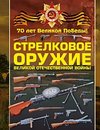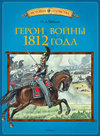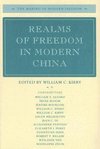
-
 Anglický jazyk
Anglický jazyk
The Atomic Bombings of Hiroshima and Nagasaki
Autor: United States. Army. District
Excerpt: ...feature was the combination of flash ignition and comparative slow pressure wave. Some objects, such as thin, dry wooden slats, were ignited by the radiated flash heat, and then their fires were blown out some time later (depending on their distance... Viac o knihe
Na objednávku, dodanie 2-4 týždne
14.13 €
bežná cena: 15.70 €
O knihe
Excerpt: ...feature was the combination of flash ignition and comparative slow pressure wave. Some objects, such as thin, dry wooden slats, were ignited by the radiated flash heat, and then their fires were blown out some time later (depending on their distance from X) by the pressure blast which followed the flash radiation. CALCULATIONS OF THE PEAK PRESSURE OF THE BLAST WAVE Several ingenious methods were used by the various investigators to determine, upon visiting the wrecked cities, what had actually been the peak pressures exerted by the atomic blasts. These pressures were computed for various distances from X, and curves were then plotted which were checked against the theoretical predictions of what the pressures would be. A further check was afforded from the readings obtained by the measuring instruments which were dropped by parachute at each atomic attack. The peak pressure figures gave a direct clue to the equivalent T.N.T. tonnage of the atomic bombs, since the pressures developed by any given amount of T.N.T. can be calculated easily. One of the simplest methods of estimating the peak pressure is from crushing of oil drums, gasoline cans, or any other empty thin metal vessel with a small opening. The assumption made is that the blast wave pressure comes on instantaneously, the resulting pressure on the can is more than the case can withstand, and the walls collapse inward. The air inside is compressed adiabatically to such a point that the pressure inside is less by a certain amount than the pressure outside, this amount being the pressure difference outside and in that the walls can stand in their crumpled condition. The uncertainties involved are, first, that some air rushes in through any opening that the can may have, and thus helps to build up the pressure inside; and, second, that as the pressure outside falls, the air inside cannot escape sufficiently fast to avoid the walls of the can being blown out again to some extent. These...
- Vydavateľstvo: Books LLC, Reference Series
- Rok vydania: 2016
- Formát: Paperback
- Rozmer: 246 x 189 mm
- Jazyk: Anglický jazyk
- ISBN: 9781153735889






 Ruský jazyk
Ruský jazyk 





